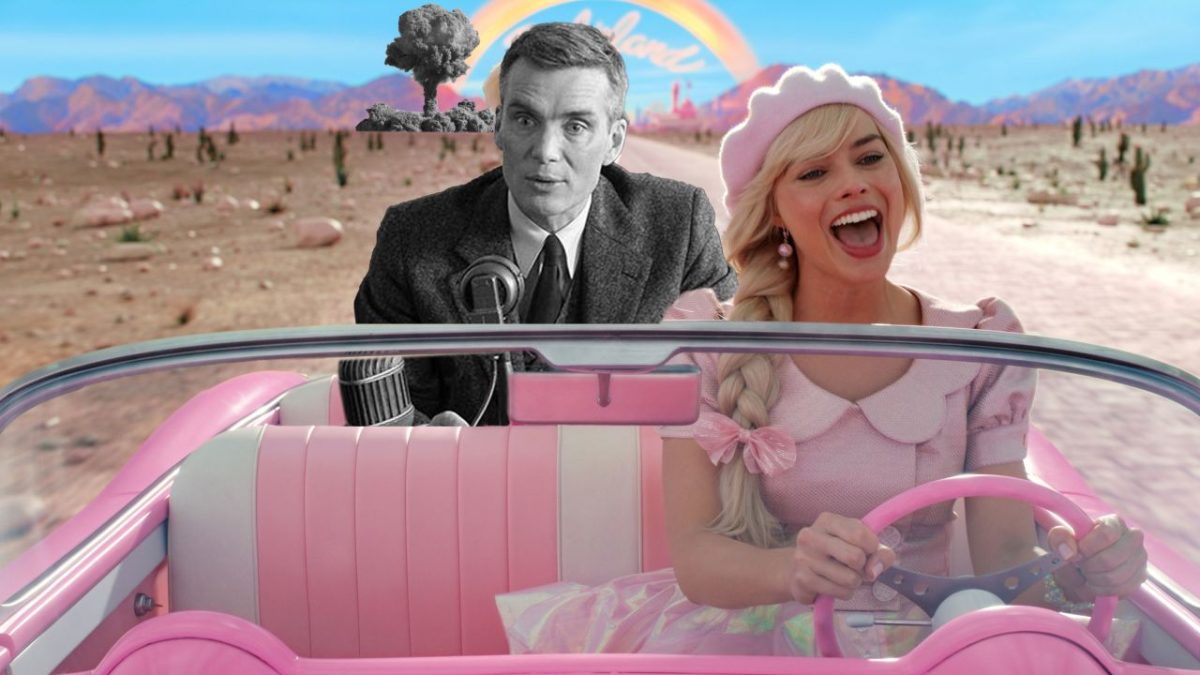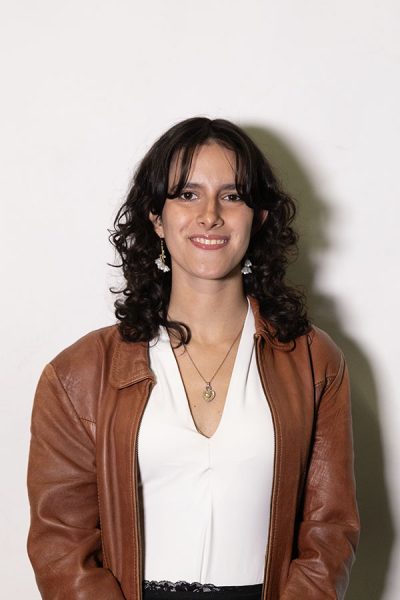This summer, theaters were drowning in blockbusters, whether it was “Asteroid City,” “Mission Impossible,” “Indiana Jones” or “Spiderman: Across the Spider Verse.” Yet no other blockbusters have caused the same commotion as what fans on the internet popularly nominated the “Barbenheimer” double feature, which, for all hardcore cinema fans, meant their entire calendar for July 21 was taken up.
Trying to capture the essence of what seems to be a marketing phenomenon that organically developed from two highly anticipated blockbusters has been an extremely challenging task for the media. “Barbie Land,” a pink paradise where women can literally be anything they want to be, was compared to Oppenheimer’s cold palette that embodies the grim picture of “death, the destroyer of worlds” in the middle of Los Alamos, New Mexico.
It is important to acknowledge the role that social media played in the success of both films. Once the release dates were announced, people quickly turned them both into memes and fans made posters and recolored sneak peeks from each movie to fit the other film’s aesthetic. Curious Refuge, a blog that has released several AI trailers including one for “Barbenheimer,” gained a lot of popularity among fans. The trailer combines the neutral beige aesthetic of “Oppenheimer” with hot pink and takes on the Barbie movie’s humor, giving us a snippet of what it would be like if the iconic doll added “Mother of the Atomic Bomb” into her infinite list of jobs and skills.
Additionally, both movies had relatively big names attached to them that helped attract fans. Many movie and TV show fanatics recognized most of the actors on screen and got excited to see some of them work together on these projects. A specific TikTok trend showed different clips of actors who made an appearance in “Oppenheimer” and paired them with the meme of Leonardo DiCaprio in “Once Upon a Time in Hollywood.”
It should not come as a surprise that these films became the event of the summer. Besides the obvious advantage of modern-day media, these two were beyond movies being premiered on the same date — they were two original screenplays by critically acclaimed directors.
Pentex production, a YouTube channel dedicated to making video essays about movies, put similarities between the two features in a nutshell. Both films had an amazing theme working not only behind and on the screen, but all the way from the pre-production with Oscar-nominated directors/screenwriters and backing from two of the biggest studios in the business. Similarly, each film revolves around an extremely noteworthy character that has had significant repercussions in history.
All of these allowed for an overlap in the audiences’ demographics which provided an even bigger discussion before and after the premieres. Greta Gerwig made it clear from the first “Barbie” preview ever released, which depicted a parody of “2001: A Space Odyssey,” that “Barbie” wouldn’t just be a chick flick, but a film that everyone should enjoy.
On one hand, there’s “Barbie.” The film went beyond what anyone could have expected based on what has been made with past adaptations of “Barbie.” Gerwig used the absurdity of Barbie Land to make a self-aware film that addressed a greater issue without losing the comedy that the ideas of a Barbie living today facilitated.
Then there’s “Oppenheimer,” which, to quote the director, Christopher Nolan, revolves around “the most dramatic situation ever.” With a stellar soundtrack, Nolan helps the viewer mimic the tension of this historic time and utilizes the gravity of the plot’s topics — war, the atomic bomb and the probability of the end of the world — to produce a film that quite literally leaves you shaking.
It’s unfair to compare one to the other because they both shine in their own way, making an excellent use of their resources to emphasize what, from the start, were strong storylines. Both directors did an amazing work that leaves the audiences thinking about moral, social and interpersonal dilemmas that encourage a greater reflection once you leave the theater.
Part of what really worked for this double feature was that at its core, they both deal with the lifelong question about men and the power they hold in society. Barbie works with it in a very clear-cut sense, but “Oppenheimer” equally questions the place of men, focusing on scientists and the repercussions of their power even when one does have the best intentions.
What made it especially captivating was that it went beyond an everyday movie experience. People were hyped and planned entire outfits to spend what felt like more than a day at the movie theater. In a way, the other aspects of fashion and social media discourse were more anticipated than the films themselves.
According to Variety.com, as of Aug. 14, 2023, on the fourth weekend upon its release, “Barbie” has made over $526.4 million in the U.S. and Canada box offices while “Oppenheimer” is reporting around $264.3 million. Both films have broken various records. Additionally, Insider.com reports that “Barbie” now holds the record for the biggest opening weekend for a female director in history, surpassing the $1 billion mark in early August — making Greta Grewig the first female director to ever hit that mark, and around that same time, “Oppenheimer” became the highest-grossing Nolan movie internationally.
With the occurrence of an event such as “Barbenheimer,” it leaves the industry wondering if something similar could ever be successfully replicated, especially considering how much of it was possible thanks to both films’ organic appeal.















